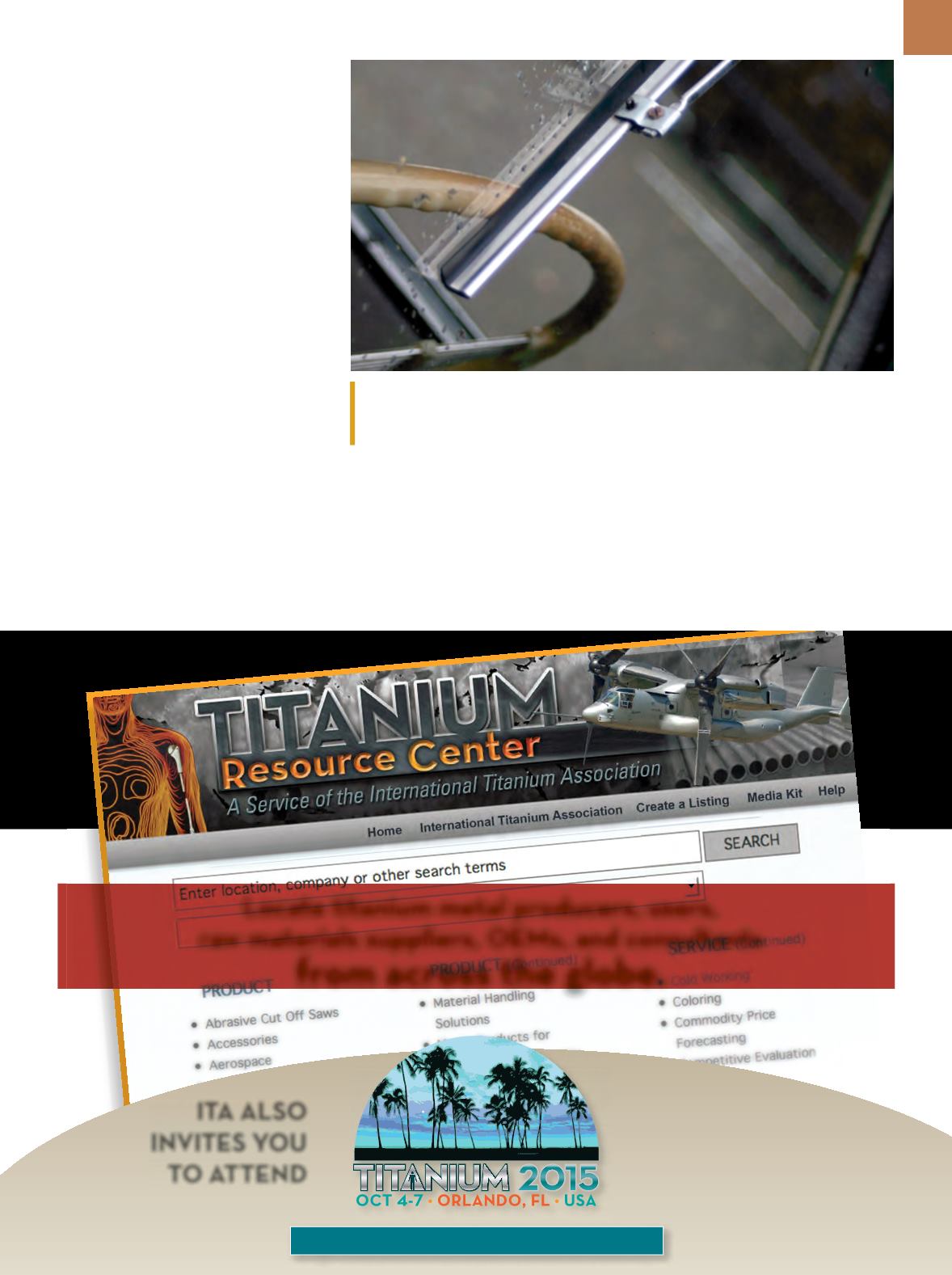

A D V A N C E D
M A T E R I A L S
&
P R O C E S S E S |
M A Y
2 0 1 5
1 1
SMART GLASS COULD
POWER CELL PHONES
Researchers at the Georgia Insti-
tute of Technology, Atlanta, produced
a color-changing glass that creates
enough electrical charge to power a
smartphone. The team developed sev-
eral types of smart glass by subjecting
materials to rain and wind. Their objec-
tive was to find a way to coat windows
to facilitate triboelectrics, the process
of harnessing energy in static electricity
that happens when twomaterials meet.
Two layers of solution achieved the de-
sired effect: One was used to harness
the energy found in raindrops while the
other was to do the same for wind. Re-
searchers created nanosized generators
for the first layer that use the positive
charge in raindrops. This occurs when
the water droplets rub against air as
they fall to the earth and make contact
with the windshield of a car.
The second layer involves sand-
wiching two charged plastic sheets
Georgia Tech researchers discovered a new type of color-changing glass that harnesses static
charges fromwind and raindrops. The electricity produced could power mobile devices.
Courtesy of Jenny Downing/Flickr.
with small springs. As the car acceler-
ates, wind pressure builds up, pushing
the sheets against each other. This pro-
duces the electric current needed for
the experiment. By combining the two
layers, researchers were able to create
a type of glass that is initially clear but
then becomes blue in tint. The process
also produces around 130 mW of elec-
tricity per square meter of the glass,
enough to power a smartphone battery.
gatech.edu. Locate titanium metal producers, users, raw materials suppliers, OEMs, and consultants from across the globe. Register Online at www.titanium.org ITA ALSO INVITES YOU TO ATTEND

















